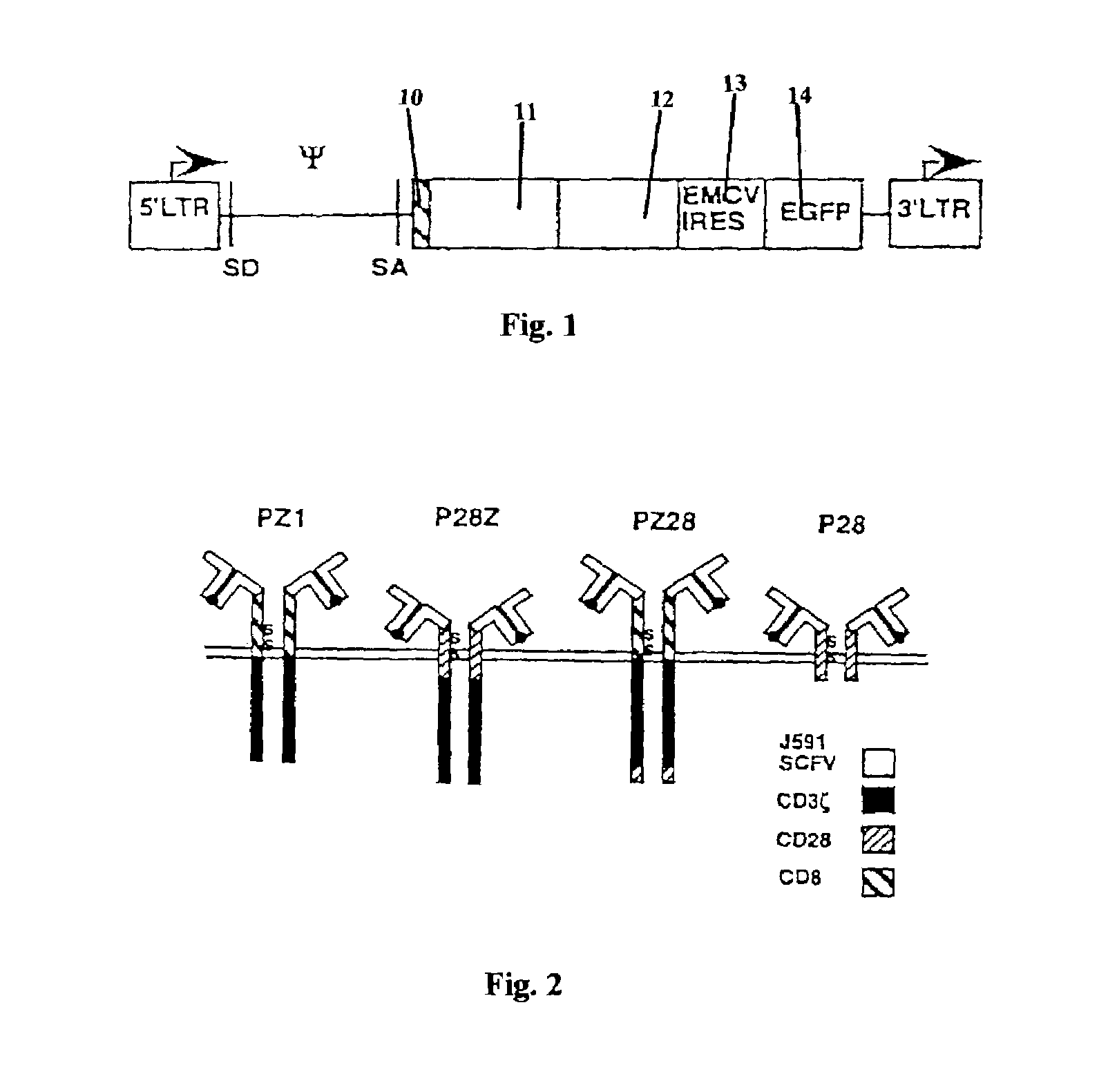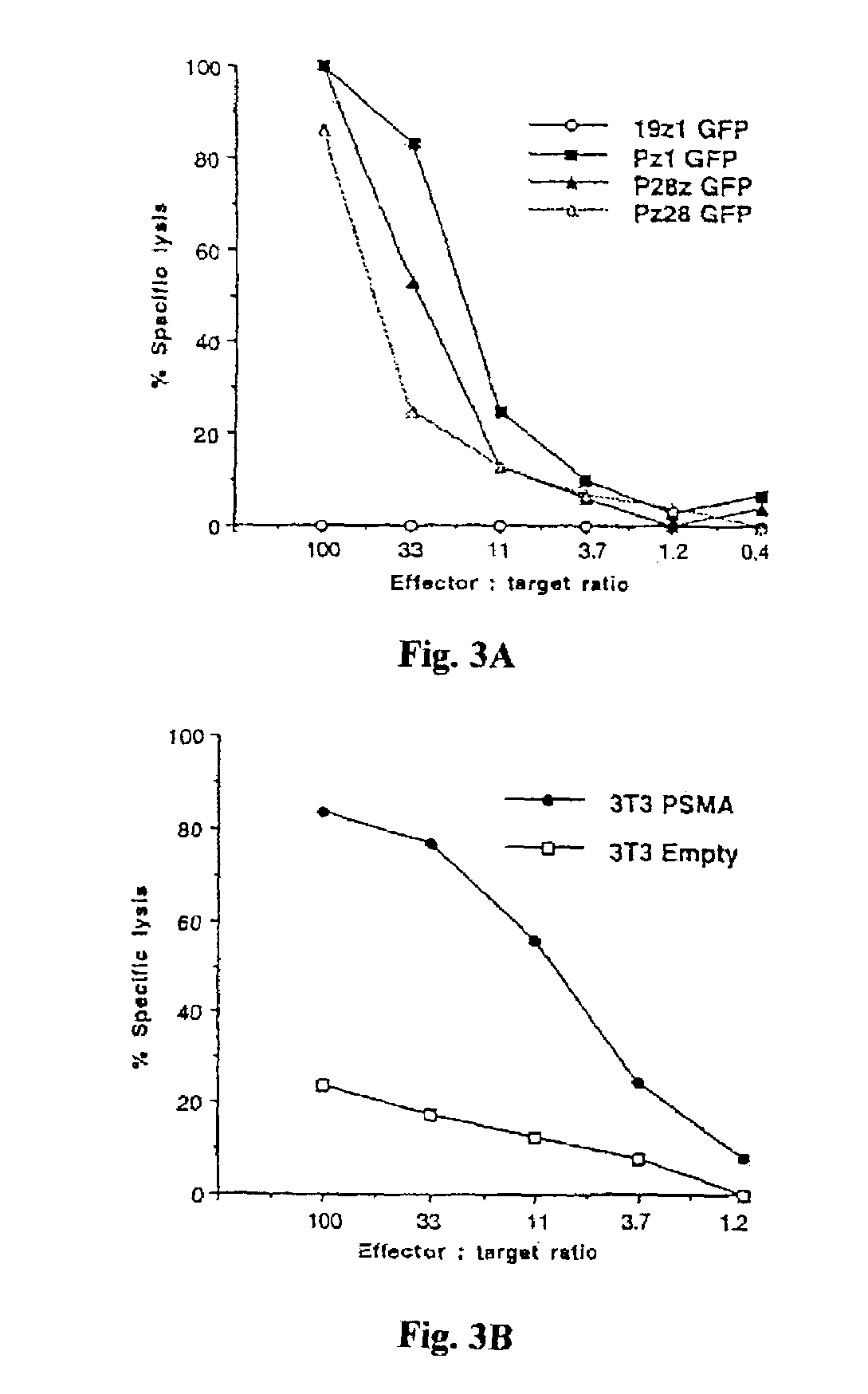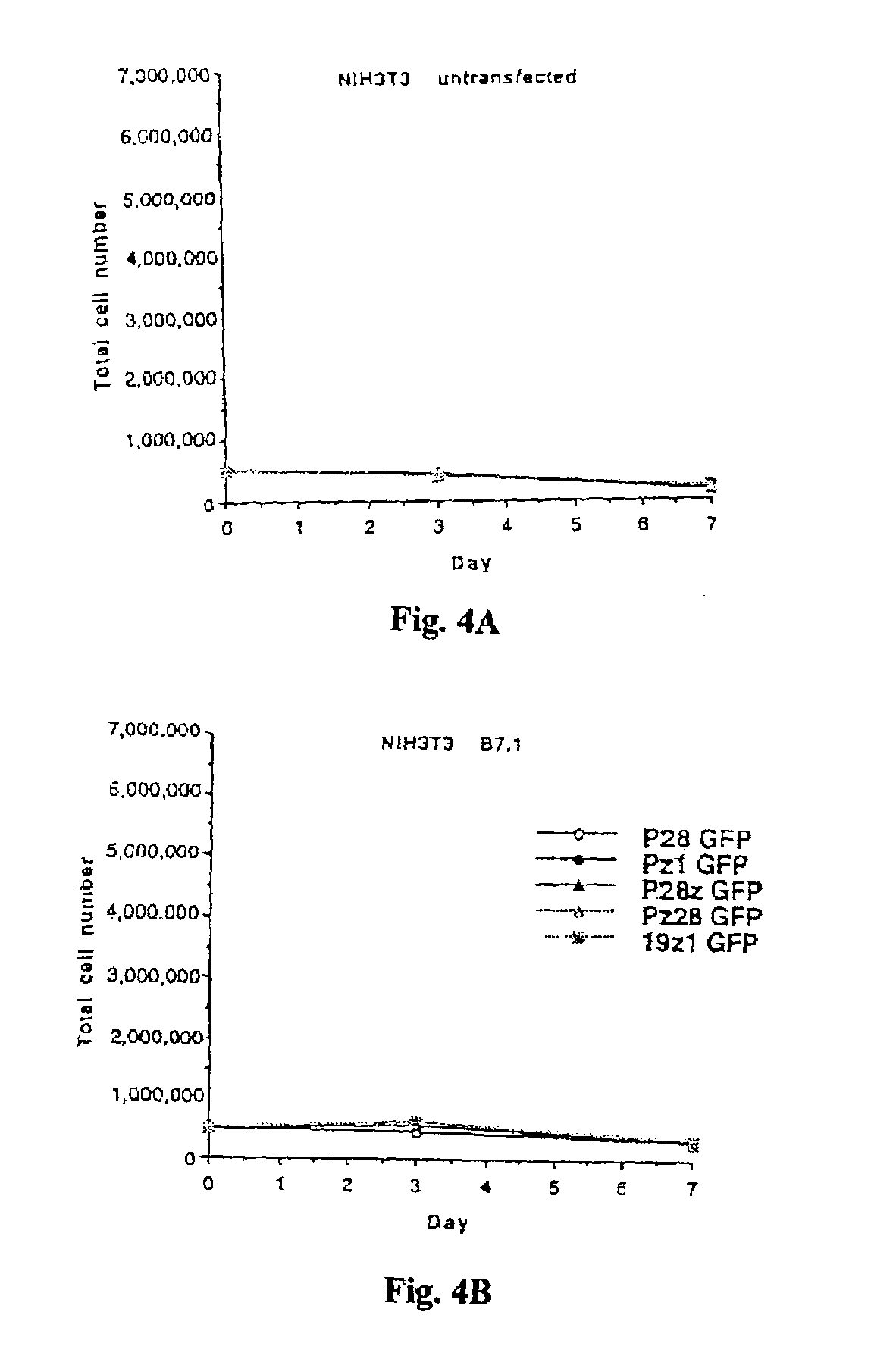Nucleic acids encoding chimeric T cell receptors
a technology of nucleic acids, which is applied in the field of nucleic acid polymers encoding chimeric t cell receptors, can solve the problems that the engagement of -chain fusion receptors may not suffice to elicit substantial il-2 secretion, and the induction of potent tumor immunity presents a major challenge for cancer immunotherapy, so as to facilitate the t cell response to a specific target
- Summary
- Abstract
- Description
- Claims
- Application Information
AI Technical Summary
Benefits of technology
Problems solved by technology
Method used
Image
Examples
Embodiment Construction
[0015]In accordance with the present invention, activation and co-stimulation are provided by a single chimeric T cell receptor comprising a zeta chain portion, a costimulatory signaling region and a target-specific binding element. The T cell receptor is suitably generated in situ in T lymphocytes by expression of a nucleic acid polymer encoding the three portions of the chimeric T cell receptor.
[0016]As used in the specification and claims of this application, the term “costimulatory signaling region” refers to it portion of the chimeric T cell receptor comprising the intracellular domain of a costimulatory molecule. Costimulatory molecules are cell surface molecules other than antigen receptors or their ligands that are required for an efficient response of lymphocytes to antigen. Examples of such molecules include CD28, 4-1BB, DAP-10 and ICOS. Thus, while the invention in exemplified primarily with CD28 as the co-stimulatory signaling element, other costimulatory elements are wi...
PUM
| Property | Measurement | Unit |
|---|---|---|
| nucleic acid | aaaaa | aaaaa |
| fluorescent | aaaaa | aaaaa |
| cell-surface expression | aaaaa | aaaaa |
Abstract
Description
Claims
Application Information
 Login to View More
Login to View More - R&D
- Intellectual Property
- Life Sciences
- Materials
- Tech Scout
- Unparalleled Data Quality
- Higher Quality Content
- 60% Fewer Hallucinations
Browse by: Latest US Patents, China's latest patents, Technical Efficacy Thesaurus, Application Domain, Technology Topic, Popular Technical Reports.
© 2025 PatSnap. All rights reserved.Legal|Privacy policy|Modern Slavery Act Transparency Statement|Sitemap|About US| Contact US: help@patsnap.com



